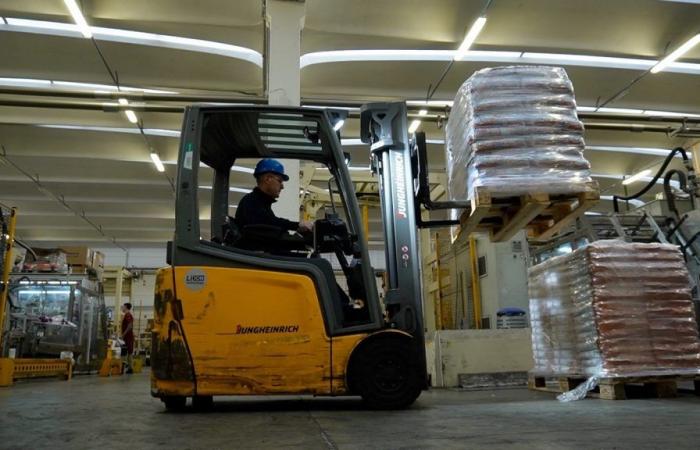
by Daniele Bovi
The Umbrian economy has slowed down in 2023. This was certified on Friday by the Perugia branch of Bankitalia when it presented the report «The economy of Umbria» during a press conference held by the director Miriam Sartini and the economists Paolo Guaitini and Lucia Lucci. «In an increasingly uncertain context – it was explained – the weakness of domestic and foreign demand and the marked increase in the cost of financing influenced this».
The GDP Starting from the GDP, as explained in recent days also by Svimez, the increase in 2023 was lower than the national average: +0.5 percent, essentially concentrated in the first quarter and with a negative trend starting from the spring, against a +0 ,9. «In an increasingly uncertain context – explained Bank of Italy -, a cooling in consumption and a decline in private spending on investments has been observed; the public one was instead supported by the start of work related to the Pnrr”.
Industry Starting from businesses and looking at the different sectors, for agriculture there is talk of a decrease of 1.6 percent and for industry of 1.4, while for construction and services there is an increase of 3 respectively, 2 and 1.4 percent. Agriculture has also paid for climate change with an increase in average temperature (+1.8 degrees) and a decrease in rainfall (-13.5 percent) compared to the average for the thirty-year period 1991-2020; this translated into declines for wheat (-9 percent), corn (-18 percent), oil (-52 percent) and wine (-40 percent).
Exports and investments In industry, turnover and exports are decreasing; in particular, exports decreased by 0.6 percent, above all due to the negative performance of metals (i.e. of the Terni Ast), while mechanics and clothing continued to provide a positive contribution. Industrial investments also fell (-3.9 percent), although those in advanced technologies remained high. The positive construction data are obviously linked to incentives and public works also linked to the Pnrr.
Tourism As for the tertiary sector, the plus sign essentially depends on tourism, with presences and arrivals growing by 12.8 and 8.9 percent respectively: «The highest levels ever – notes Bank of Italy – thanks to growth extended to the entire regional territory, more intense for non-hotel structures”. Looking at the different areas of the region, in particular between 2019 and 2023 the greatest increases are recorded in Amerino (+30.7 percent), Ternano (+30.5), Valnerina (+20.9), Assisano (+16 .9), Spoletino (+16.5) and Perugino (+10.3).
Work There is also positive news for the labor market, with an unemployment rate that has fallen to 6 percent and employment on the rise (2.6 percent), thanks to the significant increase in permanent employees. Net hiring increased by approximately a third compared to 2022, mainly due to the decline in employment terminations. The concomitant decline in the number of inactive people brought the participation rate to 70.7 percent, “a very high value – says Bankitalia – in historical comparison”. In this context, however, there continue to be difficulties for companies – more accentuated than in the rest of the country – in finding qualified personnel: «In the last fifteen years, employment levels in Umbria – write the researchers – have highlighted an unfavorable trend in comparison with similar European regions in terms of size and economic structure. The decline in the working-age population has had a significant impact.”
Families Coming to the situation of families, consumption grew by 2 percent, slowing down compared to the previous two years, while incomes, already historically lower than the rest of the country, decreased due to inflation. Based on Bank of Italy estimates, consumption is 0.9 percent higher than pre-pandemic levels. And with the cost of mortgages on the rise, there was a decline in the purchase and sale of homes (-12 percent), while purchases of durable goods began to increase again, supported by the still robust use of dedicated forms of financing.
Pnrr and healthcare Thanks to the Pnrr in Umbria, public sector investments are obviously increasing in a region where there is also a higher degree of awarding of tenders and a more intense progress compared to previous years in the use of funds linked to cohesion policies. Still on the subject of public spending and in particular healthcare, Umbria has a higher staffing ratio than the national average. However, in the future (between 5 and 10 years), the retirement of a growing number of employees (around 1,400) including doctors, nurses and technicians will have an impact.





